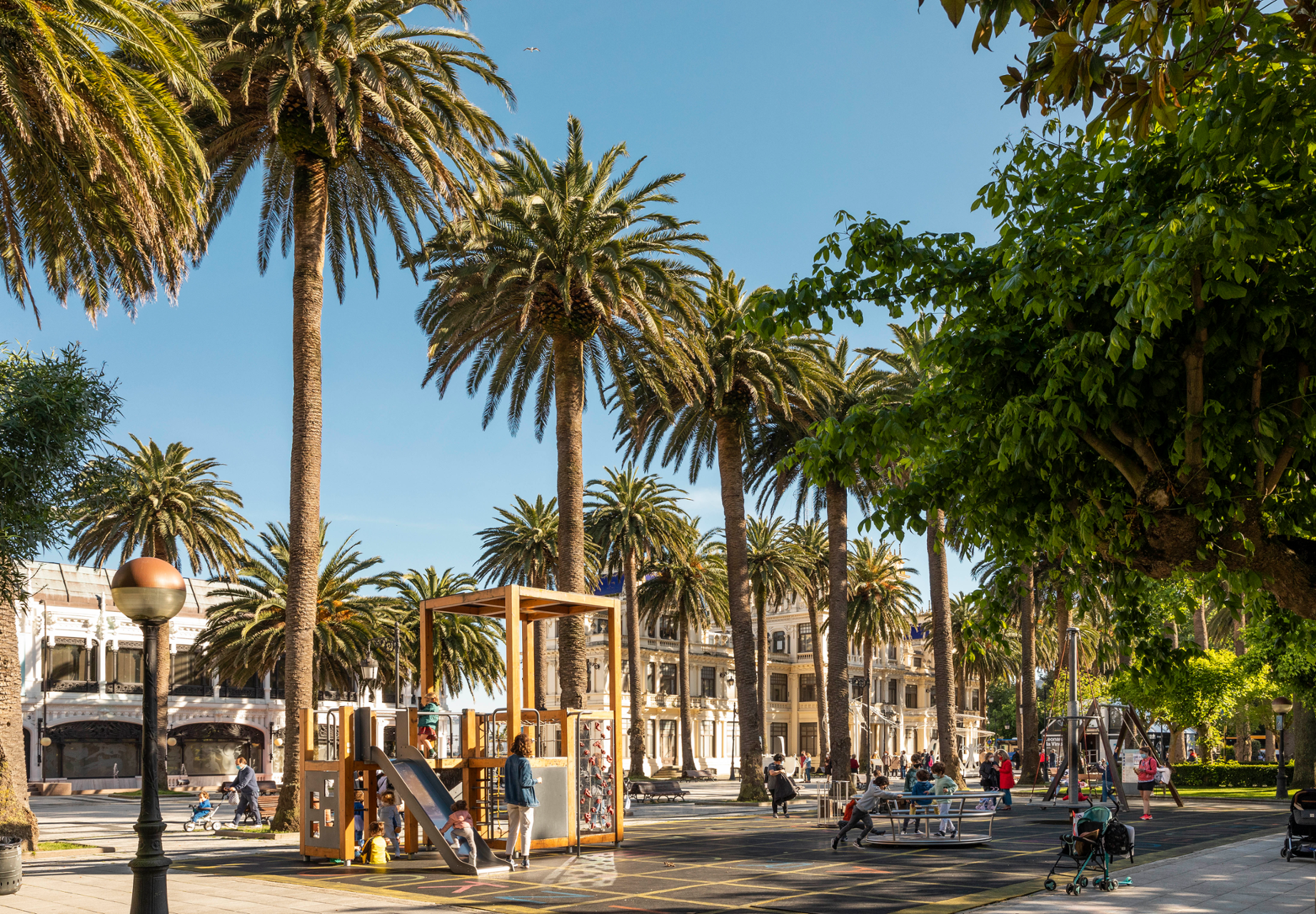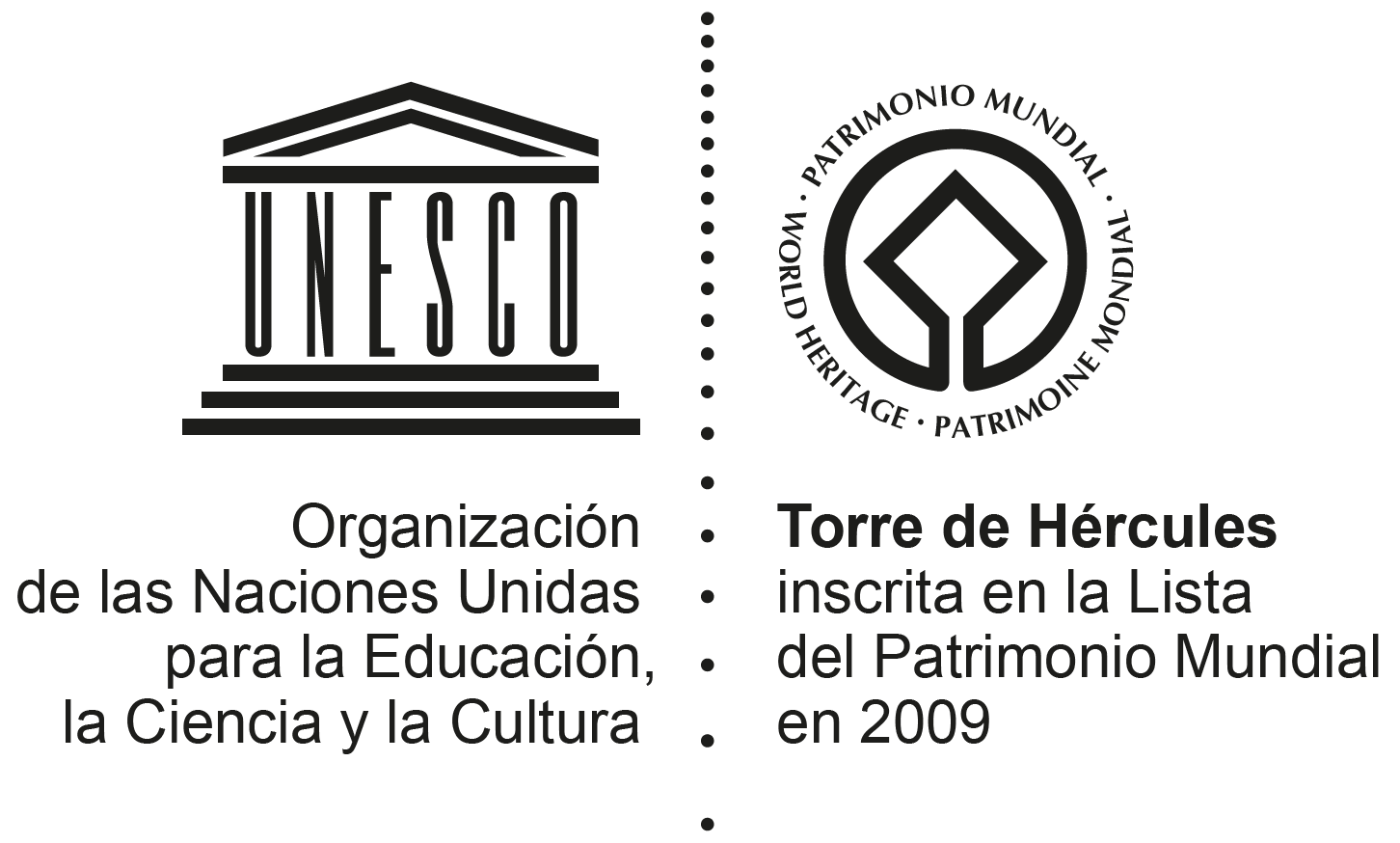- Home
- Place
Méndez Núñez Gardens
The Méndez Núñez Gardens are like the living room of A Coruña. Here people come to stroll, to rest in the shade of the trees, to participate in summer activities and festivities, to go for bike rides or to enjoy a beautiful walk between La Marina and Plaza de Ourense.

Address:
Telephone:
These gardens are full of history, and they're almost the first thing visitors see when they arrive in A Coruña by car or boat. A meeting point for many people from A Coruña and a place where you can be transfixed by the collection of sculptures, the largest in the city, which are nestled among the trees and which pays tribute to prominent figures in literature, the arts, science and Galician life.
The gardens were built in 1868 on land reclaimed from the sea. At that time, they were known as the Ensanche Gardens. Three years later, they were renamed after the naval officer Casto Méndez Núñez. Since then, they have formed part of the life of the people of A Coruña. There are many who still remember the gatherings and walks along the Palm Promenade, one of the most outstanding areas of the Méndez Núñez Gardens.
Equally symbolic and one of the most beloved spaces in this garden is the central pond and its fountain, which has been a photographic backdrop for the people of A Coruña since photography began more than 150 years ago. Through this archive of images in the gardens, you can almost see the evolution of the people of A Coruña and their appearance. Today, with mobile phones in hand, there are still many people who decide to take a nice photo in front of the pond as a souvenir of A Coruña.

Palm Promenade
The route through the gardens starts at the Paseo de las Palmeras, next to two beautiful modernist buildings that form part of the postcard of the gardens: Kiosco Alfonso, a jewel dating from 1912 and the setting for exhibitions throughout the year and the venue for Viñetas do Altántico (the well-known comic book fair held in August in A Coruña), and A Terraza, built in 1922 and currently the headquarters of RTVE and RNE in the city. Here also awaits another space much loved by the people of A Coruña: the Copacabana, a recently refurbished café, a meeting point to take a break after a stroll through the gardens. But if there is one thing the Palm Promenade is famous for, it is the impressive monument in homage to Curros Enríquez, one of the greats of Galician literature. The monument was created by the renowned Galician artist Francisco Asorey between 1928 and 1934.
Other sculptures that form part of this walk are the monument to Daniel Carballo; the monument to the Book and its creators, by Manuel García Buciños; the sculpture to Suárez Ferrín and Ramón María del Valle Inclán, by Ramón Conde, and the monument to Wenceslao Fernández Flórez, by José Castiñeiras Iglesias. Another curious work, and one of the most recent, is the sculpture in homage to John Lennon, which waits hidden among the trees in front of the pedestrian crossing leading to the Cantons.
The wooded area
After the palm promenade, and in the direction of Ourense square, the wooded area of the gardens awaits. This urban forest wonderland is filled with species from all over the world. Among the most symbolic trees in the park are the metrosideros. There are more varieties to go around the world through nature: Japanese cypress, Norfolk pine, holly or pink-leaved beech are more varieties waiting in Méndez Núñez. Also in this area you can discover more sculptural wonders such as the monument to Emilia Pardo Bazán, a jewel by Lorenzo Coullaut Varela or the symbolic monument to Concepción Arenal, by Rafael González do Villar. The collection of sculptures is completed with the monument to Castelao, by Manuel Ferreiro Badía; the monument to Manuel Murguía by Fernando Cortés Bugía; the sculpture to Juan Fernández Latorre, by José Escudero; the commemorative monument to the International Year of the Child, by Mono International Year of the Child, by Mon Vasco; to Doctor Hervada, by José Escudero; to Themys e Baco and the Neapolitan Fisherman, by Felipe de Moratilla; to Eduardo Pondal, by Fernando Cortés Bugía and to Aureliano Linares Rivas, by Agustín Querol.
Méndez Núñez ends in a beautiful rose garden: inspired by English gardens, with different varieties of roses that fill the city centre with colour.
Cultural life
The gardens are also important for the cultural activities that take place throughout the year. In summer it becomes the cradle of artisans and booksellers through fairs such as Mostrart or the Feira do Libro. It is also a space for open-air concerts, for dance groups or for the organisation and enjoyment of fashion shows.




